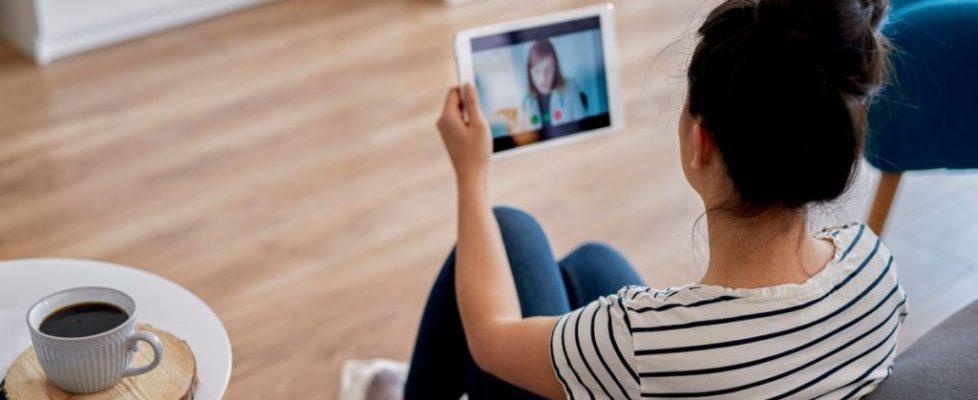Contributor: Telehealth Is Efficient at Dealing With Mental Health Needs
Appropriate application of telehealth could make health care delivery more efficient, explains Dr Mike Hoaglin.
As a currently practicing physician with plenty of experience working in the emergency department, I’m no stranger to advocating for patients’ access to care within complex and inefficient systems. Barriers to that care range from shortage of in-network supply of providers to the patient’s own social determinants of health struggles to make and keep a follow-up appointment. Outpatients with mental and behavioral health issues are especially vulnerable to falling through the cracks in the health care system but have incredible promise for improved outcomes through telehealth.
The costly mental health crisis in America likely touches every family in some way. Mental illness affects 1 in 5 adults and half of those are not receiving treatment. In addition to possible toxic central nervous system effects of the SARS-CoV-2 virus itself, the COVID-19 pandemic took its toll on mental health due to the changes to regular lifestyle, unintended consequences of social distancing, quarantine, working from home, not being able to work from home, or not being able to work at all. Confirming what providers already knew anecdotally across the care continuum, a meta-analysis revealed at least a 25% increase in cases of depression and anxiety in 2020 compared with 2019.
During the March-August 2020 peak pandemic period, 40% of mental health and 11% of non–mental health visits were performed via telehealth. While non–mental health visits have dropped down to 5% telehealth, mental health holds strong at 36%, according to a March 2022 study.
Telehealth Allows Us to Do More for Patients With Less
More clinician interaction, less waiting. The patient and provider have important live, face-to-face video calls (often referred to as “synchronous” visits), similar to visits in person, but the patient is not leaving home or work, arranging childcare, driving and finding parking, or waiting in a brick and mortar waiting room. The patient’s time is respected and used more efficiently. The provider and health care system enjoy more efficiencies as well; according to a study, the no-show rate of telehealth visits during the pandemic was 7.5%. This is lower than the in-office visit no-show rate of 36.1% and a prepandemic in-office no-show rate of 29.8%.
The patient-provider interactions may continue between live, synchronous visits. While elaborate digital therapeutic programs exist, fundamental aspects include secure text messaging and symptom surveys. These typically nonurgent interactions may be referred to as “asynchronous” or “store and forward” visits, as the communications are not live. Symptom surveys (sometimes referred to as a form of “remote patient monitoring”) may include widely accepted instruments such as the PHQ9 or GAD7 used to periodically monitor symptom levels of depression and anxiety, respectively, between live visits. Armed with these asynchronous check-ins, clinicians can adjust medications, follow up on safety concerns, or otherwise initiate timely intervention rather than waiting for the next scheduled live visit. These online tools keep patients engaged, reducing risk and improving outcomes. Additionally, they allow practices to leverage clinician time in a more efficient manner.
More choices, less stigma. Telehealth allows providers to meet patients where they are in life. Patients may be at home, traveling for business, or unable to go outside due to their anxiety. During the pandemic, most of US health care enjoyed a relaxation of medical licensing laws, revealing the promise of nationwide telehealth. In many cases, doctors could care for patients in any state. Patients living in doctor-shortage areas could finally get an appointment, and patients with cancer could get second opinions at multiple renowned cancer centers in the same day from the comfort of their home. Many mental health patients were getting the help they needed after years of feeling stigmatized and going untreated, as accessing care privately from a smart phone seemed more familiar and accessible.
Telehealth Still Has Its Limitations
Not every patient is appropriate for telehealth. Ongoing triage remains an important part of patients getting the care that they need, and some patients simply do not prefer telehealth. Patients with severe issues may be out of scope for telehealth and require a higher level of care.
Furthermore, medical licensing has once again become a barrier, as all but 10 states have returned to prepandemic licensing requirements across state lines.
Telehealth Needs More Financial Support From Payers and Legislation
We’ve been practicing some crude form of telehealth for decades if you include doctor-patient email and phone communications. We are just now accepting the codification of it as a legitimate medical encounter. While synchronous coverage has been widely accepted as reimbursable, payers would do well to expand coverage to better include reimbursement for asynchronous care. They stand to benefit from providers intervening in a timely fashion and patients likely achieving remission earlier. We also need state support to again reduce barriers to receiving care across state lines.
Regardless of the specialty, evidence shows that appropriate application of telehealth to the appropriate patient makes health care delivery more efficient.

